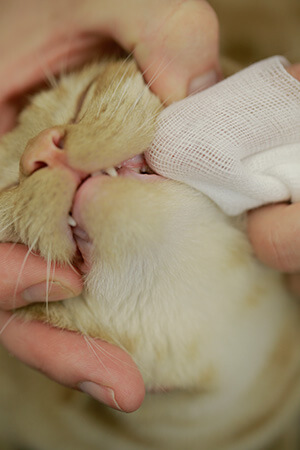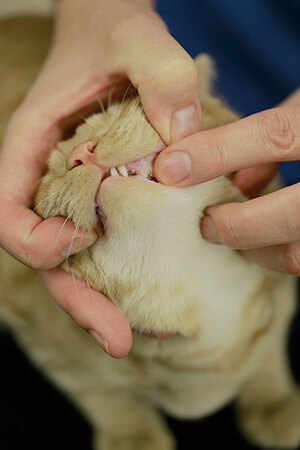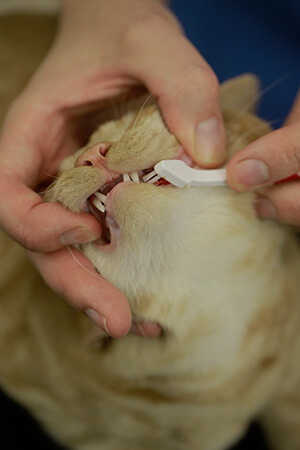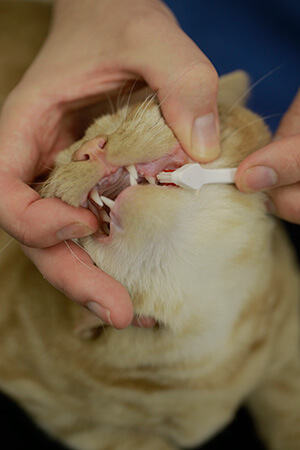Brushing – ideally twice a day – keeps your cat’s teeth and gums healthy. It stops the build-up of plaque, tartar and bacteria that can cause tooth decay and gingivitis (inflammation of the gums). It also helps to prevent many painful dental problems later on.
It’s important to start good teeth-cleaning habits from the outset, but it needn’t be a chore and can actually be an enjoyable time for both you and your pet. Take things slowly and gently, keep the sessions short and positive, and make sure you talk to, and praise, your cat as you go. While you are both getting used to tooth brushing, knowing how to keep cats’ teeth clean without brushing can also be helpful.
Build positive associations
The first step is getting your cat used to having their mouth touched. Start gently by dipping your finger into something like tuna water, chicken broth or another liquid your cat may like.
Call your cat with a voice that means ‘treat’ and let them lick the liquid off your finger. Then touch your soaked finger gently over your cat’s gums and teeth.

Introduce texture
Now, place a thin piece of gauze around your finger and dip it in the flavoured liquid. Gently move that finger over the teeth in a circular motion.
Repeat this for a few sessions until your cat feels comfortable with this procedure. Remember to keep praising your cat and keep an upbeat attitude.
When your cat is used to having the flavoured gauze in their mouth, move on to a soft, small child’s toothbrush or a thimble brush.
Start by allowing them to lick something tasty off the brush to get them used to the consistency – especially the bristles on the brush.

Choose the right toothpaste
Now, add a little pet toothpaste. Do not use human toothpaste as the fluoride can irritate your cat’s stomach and the froth often distresses cats. Pet toothpastes are usually poultry or malt-flavoured, though toothpastes made just for cats are often fish-flavoured.
Again, take things slowly to get your cat used to the flavour and consistency of the toothpaste. Let your cat lick some off your finger and then apply some to their gum line with your finger.

Time to brush!
Now your cat is used to the toothbrush and toothpaste, you are ready to start the actual brushing.
Talk to your cat in a happy voice during the process and praise them at the end. Again, by making it appear to be a game, you will both have fun doing it.
Start by gently brushing one or both upper canine teeth (the large ones in the front of the mouth), as these are the easiest teeth for you to get at. When your cat accepts having several teeth brushed, slowly increase the number of teeth you are brushing.
Remember, you don’t have to scrub the teeth hard. The toothpaste has a chemical reaction that supports the physical action of the procedure.

Don’t forget the back teeth
The most challenging teeth to reach are the larger molars at the back of the mouth.
To reach these, you will need to draw your cat’s lips back. Some cats don’t like this being done. If so, you may be able to reach these without having to draw the lip back by inserting the brush inside the cheek.
Either way, don’t forget about these teeth, as they are common areas for gum disease.
And finally, remember to book an annual dental check-up so that your vet can check your cat’s teeth – you’ll also need to do this for your insurance.

Do you have any tips for cleaning your cat’s teeth? Share them with us on Facebook, Instagram or X, using the tag #PethoodStories.
